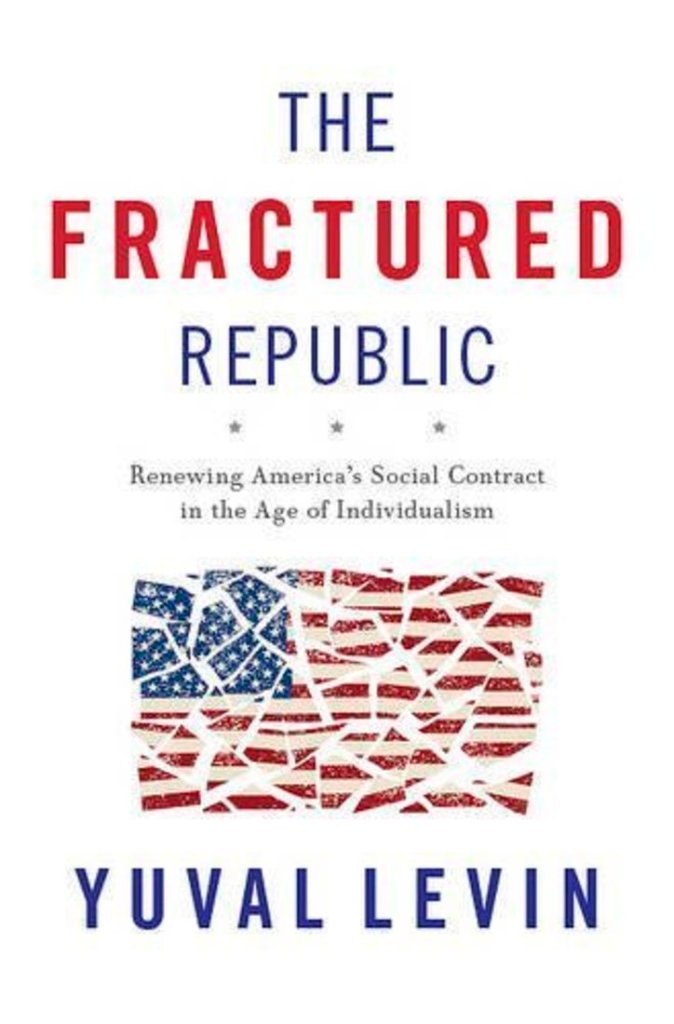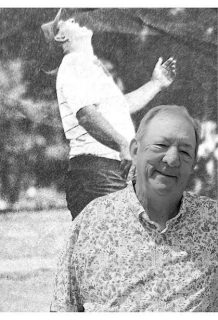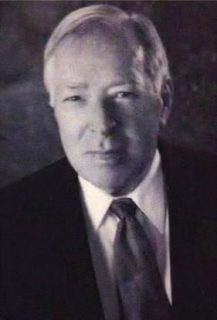Levin’s ‘Fractured Republic’ offers some fine ideas
Published 9:51 am Sunday, September 11, 2016

- sunread_book_fractured
“The Fractured Republic: Renewing America’s Social Contract in the Age of Individualism” by Yuval Levin. New York: Basic Books, 2016. 272 pages, $27.50 (hardcover).
In this presidential election year, Americans seem profoundly unhappy with their political leaders, dissatisfied with their political choices and more hostile than ever to those with whom they politically disagree. Yuval Levin’s new book, “The Fractured Republic,” seeks to diagnose what’s wrong with our political discourse and point the way toward a more civil and community-based national renewal.
Trending
Levin, editor of the journal National Affairs and a former policy adviser to President George W. Bush, argues that both Democratic and Republican Party leaders are out of touch with the concerns of ordinary Americans, at least in part because of their unhealthy nostalgia for the past. Democrats, Levin writes, are fixated on the 1960s and long to re-create the political energies of that era, with its emphasis on expanding government programs and liberating groups long oppressed by the status quo. Republicans, on the other hand, pine for the 1980s and the Reagan era of tax cuts and deregulation and military strength. Both long for a bipartisan political consensus they believe no longer exists because of the narrow-mindedness of their opponents.
Levin argues that both perspectives overstate the positive features of mid-to-late-century America and selectively ignore political and social realities that we would not want to see return. The way forward, Levin writes, is to respect the lessons of the past but to articulate a political vision appropriate for our own time.
To make his case, Levin spends the first half of “The Fractured Republic” exploring how America became increasingly consolidated as a culture from the end of the 19th century into the middle of the 20th. Using rich data from historical and sociological research, Levin traces the origins of this consolidation to the rise of the industrial economy, the growth of government and the emergence of new forms of media.
By the mid-20th century, Americans were, in fact, more alike than ever before thanks to these changing forms of technology and economic structures. Common forms of media meant that American popular culture was more homogenized. World War II left America the sole economic superpower, creating the opportunity for a vast expansion of the domestic economy for workers of all skill levels. There was a broad consensus that big government and big business were both essential parts to a successful America, and this period brought us the biggest expansion in America’s social welfare state.
Levin shows how the signs of rebellion against this social consolidation were already abundant even in the 1950s and then came into full bloom in the 1960s, when there was a widespread rejection of traditional sources of authority and a resistance to America’s perceived cultural sameness. Individualism came to replace social cohesion as Americans’ most important value. This brought necessary and important developments like the civil rights movement and greater demands for social equality and tolerance of differences.
But this individualism also led to the rapid fracturing of our collective sense of a shared common culture. Meanwhile, America’s global competitors began changing the economic landscape. While cheap overseas consumer goods and technology helped feed the individual tastes and desires of ordinary Americans, the same global market brought a decline in economic opportunity for lower-skilled workers.
Trending
Levin sees the 1980s as both an extension of the trend toward deconsolidation and a response to these new global forces. Government did not actually shrink during the Reagan years, but the Republican Party’s modern identity was shaped by the spirit of entrepreneurialism and market-oriented policies of tax cuts and deregulation that characterized that era and, along with the collapse of the Soviet empire, led to a second great expansion of the American economy that continued largely unabated into the 1990s.
But the fracturing continued as the identity individualism of the left and the market individualism of the right further eroded traditional sources of social cohesion, which Levin calls the “mediating institutions of society,” like the family, churches, civic groups and local governments. Paradoxically for conservatives, this kind of extreme individualism has contributed to a massive expansion of state power. In a world where society is just made up of atomized individuals with nothing else to hold them together, an all-powerful state is the only mechanism for large-scale problem solving.
Levin admits he is a conservative. He argues that top-down government solutions are no longer feasible in such a politically and culturally fractured society, or one in which America is struggling to compete in the global marketplace. He calls for a renewal of those “mediating institutions” of society, which are more responsive to the deconsolidated nature of the culture. But Levin rejects the market individualism embraced by so many conservatives, calling for a much greater policy emphasis on opportunities for the poor and middle class. And he says social conservatives should work harder to live out their values, which are now actually counter-cultural, in their local communities.
“The Fractured Republic” will challenge both self-identified conservatives and progressives. Conservatives may push back against Levin’s call for policies that emphasize greater solidarity with the poor and middle class. Progressives will struggle with Levin’s emphasis on problem solving at the local level, but there’s much in “The Fractured Republic” that should ring true for everyone, and its ideas should be carefully considered by policymakers and everyday citizens alike.
— Reviewed by Gary W. Houchens, Western Kentucky University Department of Educational Administration, Leadership and Research.






